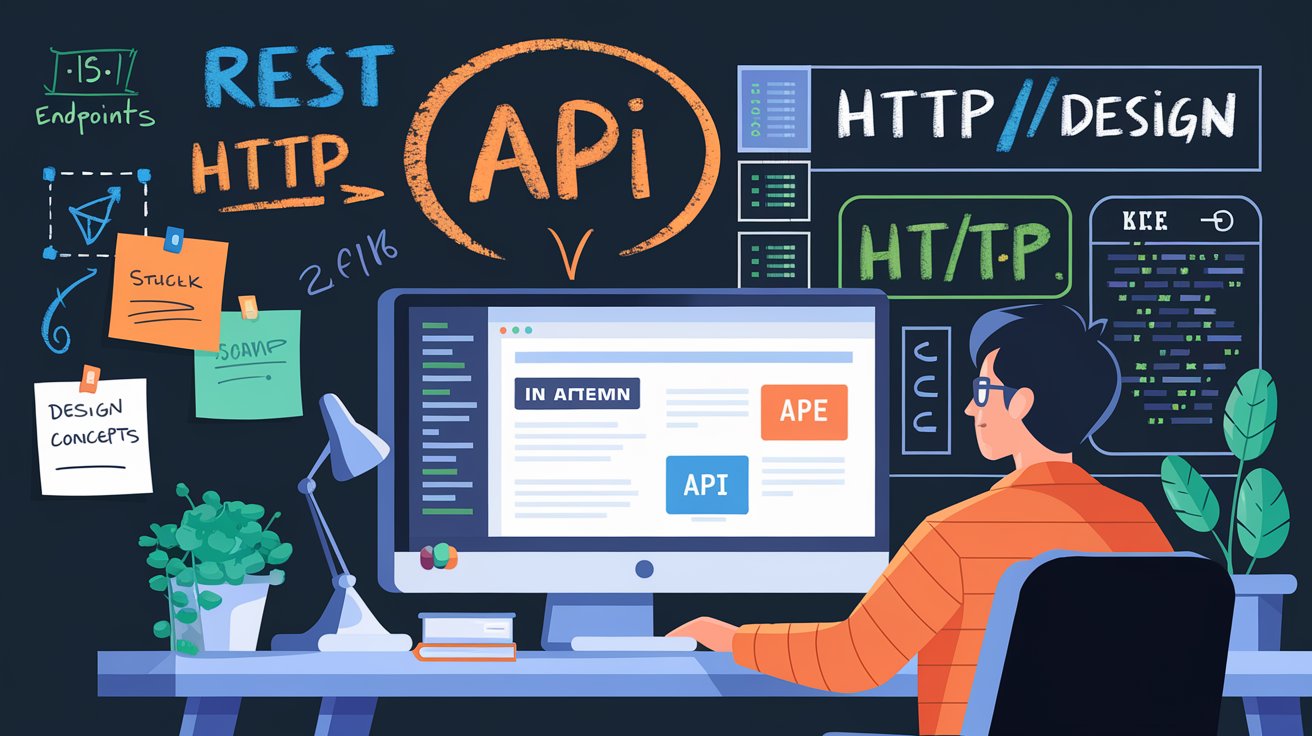In today’s fast-paced world of web and mobile development, building efficient, scalable, and maintainable REST APIs is a skill every developer should master. Whether you’re a beginner or a seasoned coder, understanding the core principles of REST API design can set you apart and help you build systems that are user-friendly and easy to maintain.
In this guide, we’ll dive deep into the best practices for mastering REST API design, covering everything from the basics of REST principles to advanced topics like security, performance, and documentation.
Table of Contents
ToggleIntroduction to REST API Design
What is a REST API?
A REST API (Representational State Transfer Application Programming Interface) is a set of rules that enables communication between different software applications. RESTful APIs rely on a stateless, client-server architecture and are used to interact with web services by making HTTP requests to access and manipulate data.
Why REST API Design Matters in Modern Development
As applications grow more complex, having a well-structured API that is easy to use, maintain, and scale becomes crucial. Properly designed REST APIs can enhance user experience, streamline backend operations, and improve overall system performance.
Understanding the Basics of RESTful Principles
The Concept of Representational State Transfer (REST)
REST is an architectural style that defines a set of constraints for building scalable web services. It’s built on standard web technologies, such as HTTP, and emphasizes statelessness, cacheability, and a uniform interface.
Key Architectural Constraints in RESTful Design
- Stateless: Each request from a client to a server must contain all the information needed to understand the request.
- Cacheable: Responses must define whether or not they are cacheable to improve performance.
- Layered System: A client should not assume direct connection to the end server.
Best Practices for Designing REST APIs
1. Use Nouns, Not Verbs in URIs
When designing endpoints, make sure to use nouns that represent the entity you’re interacting with, not verbs. For example:
- Correct: /users
- Incorrect: /getUsers
2. Use HTTP Methods Appropriately
RESTful APIs rely heavily on HTTP methods to perform actions on resources:
- GET: Retrieve data
- POST: Create new resources
- PUT: Update existing resources
- DELETE: Remove resources
- PATCH: Modify part of a resource
3. Implement Proper Status Codes
Properly implementing status codes ensures that your API communicates the outcome of requests effectively:
- 200 OK: Request was successful.
- 404 Not Found: Resource not found.
- 500 Internal Server Error: A server error occurred.
Structuring the API Endpoints
1. Organize Resources Efficiently
Group similar resources under a common endpoint. For example, you might have:
- /users
- /orders
- /products
2. Versioning Your API
Version control ensures backward compatibility. Best practice is to include the version in the URL, like /api/v1/users.
3. Handling Query Parameters
Use query parameters for filtering, sorting, and pagination. For example, you can structure an endpoint like this: /users?page=2&limit=20&sort=name.
Designing for Performance and Scalability
1. Pagination, Filtering, and Sorting
Always paginate large datasets and allow users to filter and sort the results. This ensures fast response times even with large databases.
2. Caching Strategies in REST APIs
Implement caching using headers like Cache-Control to avoid fetching the same data repeatedly. This improves the performance of your API.
3. Rate Limiting and Throttling
To protect your API from abuse and ensure availability, implement rate-limiting mechanisms to restrict the number of requests a user can make within a given timeframe.
Security Best Practices in REST API Design
1. HTTPS and Data Encryption
Always secure your API with HTTPS to encrypt data in transit. Avoid using plain HTTP as it exposes sensitive data.
2. API Authentication and Authorization
Use token-based authentication methods like JWT or OAuth 2.0 to secure your API and ensure that only authorized users can access it.
3. Preventing Common API Vulnerabilities
Implement security mechanisms to protect against common attacks like SQL Injection, Cross-Site Scripting (XSS), and Cross-Site Request Forgery (CSRF).
Error Handling and Validation
1. Standard Error Response Format
Always return meaningful error messages in a consistent format. Include details like status code, message, and error description.
2. Input Validation and Error Messaging
Validate user input and provide clear error messages when validation fails. This prevents bad data from corrupting your system.
Documentation and API Testing
1. Importance of API Documentation
Documenting your API is essential for users and developers alike. Tools like Swagger and Postman are great for generating and testing your API documentation.
2. Testing REST APIs Efficiently
Use unit and integration tests to ensure that your API works as expected. Tools like Postman and JUnit can be incredibly helpful for this purpose.
Case Study: Real-World Examples of REST API Design
Many leading tech companies like Twitter, Google, and GitHub have built their platforms around robust and scalable REST API designs. Learning from their success can help you implement best practices in your projects.
Conclusion: The Path to REST API Mastery
Mastering REST API design requires a thorough understanding of REST principles, attention to detail, and the ability to adapt to evolving best practices. By following the guidelines laid out in this article, you’ll be well on your way to building powerful, efficient, and scalable APIs that can support any application.
FAQs
1. What are the most common mistakes developers make in REST API design?
Common mistakes include poorly structured endpoints, not using proper HTTP methods, and failing to implement security features.
2. How can I ensure my REST API is scalable?
To ensure scalability, implement pagination, rate limiting, and efficient database queries. Caching can also greatly enhance performance.
3. What is the difference between REST and GraphQL?
REST is a more traditional approach with fixed endpoints, while GraphQL allows clients to request specific data, offering more flexibility.
4. What tools can I use to test my REST API?
Tools like Postman, Swagger, and JUnit are widely used for testing REST APIs.
5. How do I secure my REST API?
Securing a REST API involves using HTTPS, implementing authentication and authorization, and protecting against common vulnerabilities like SQL Injection and CSRF.

